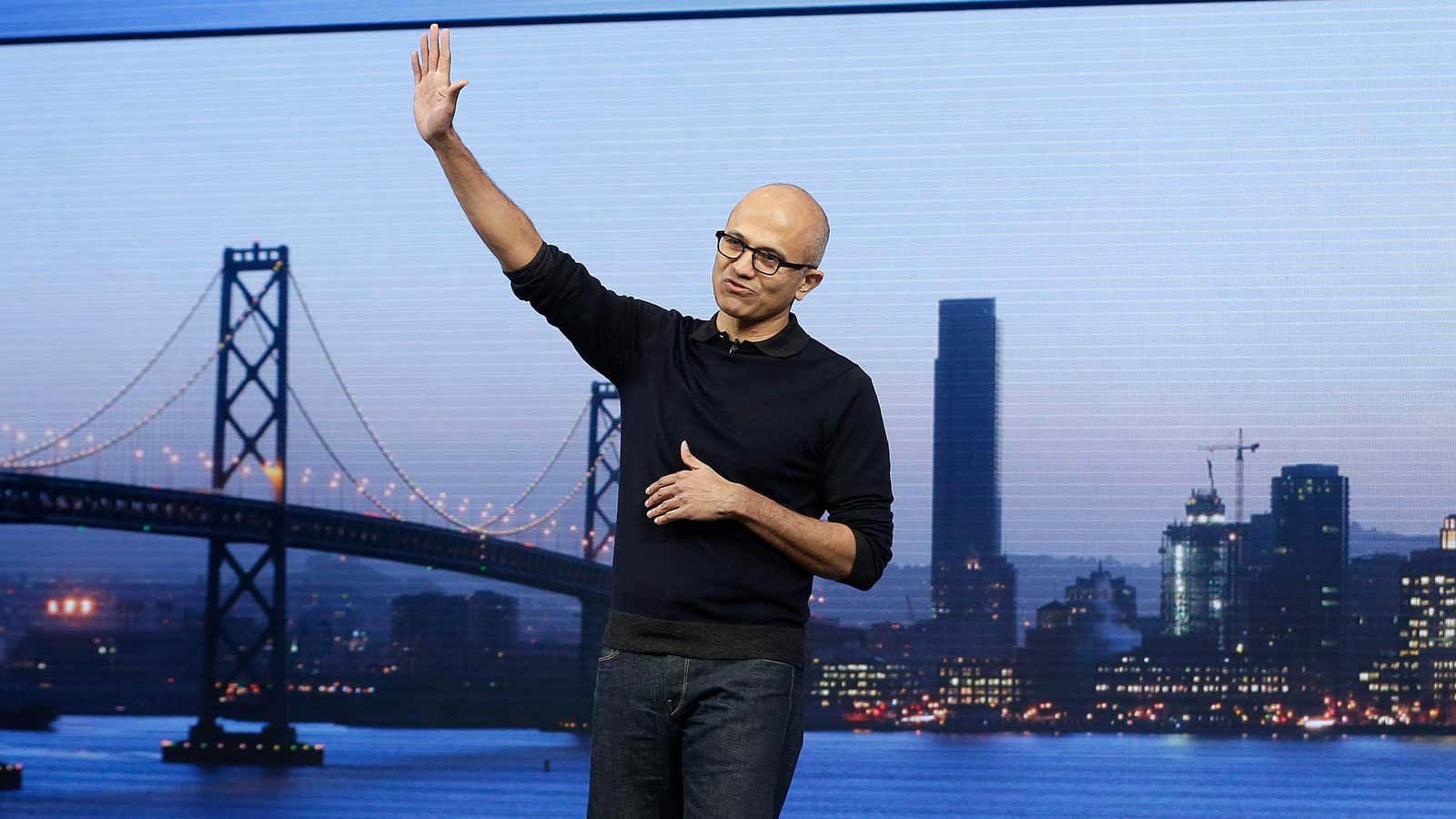Microsoft, which dominated the PC era with Windows, has seen its relevance fade as Google’s Android and Apple’s iOS have defined the mobile era. Now as Microsoft puts its muscle behind the new Windows 10 operating system, it also has a new approach to wooing companies that make apps for rival platforms. To sum it up: If you can’t beat ’em, join ’em.
At Microsoft’s developer conference today in San Francisco, the company made a proposition that mobile app makers might find hard to refuse: Reuse your existing code written for other platforms—Android, iOS, and the web—to create Windows apps. (With some modifications, these can run on Windows phones, tablets, and PCs, as well as the Xbox One and HoloLens goggles.) Then, tap into an opportunity to reach a Windows audience that Microsoft hopes will extend to 1 billion devices in the next two to three years.
In essence, Microsoft now wants all developers on its platform, regardless of the tools they want to use, languages they want to write in, or devices they want to target. While it might not work, it’s symbolic of the new Microsoft under CEO Satya Nadella, who is focusing the company on growing markets like mobile and the cloud, and is being more open-minded about competing platforms.
“This in my book was a really, really good first step for Microsoft to win back the development community that not too long ago, it absolutely owned,” says Forrester analyst Michael Facemire, who recalls building on Microsoft’s Visual Studio about 20 years ago. ”It seemed like Microsoft lost its way with developers when it started building bigger, bulkier tools and environments.”
Though Microsoft still leads the PC market, it lags far behind Google and Apple on mobile. Of the roughly 2.4 billion smartphones, tablets, and PCs shipped last year, just 14% run Windows, according to Gartner. Microsoft, meanwhile, has had a hard time attracting mobile developers, even going so far to pay them to build Windows apps. By reducing the hurdles to making Windows apps, this might help.
Microsoft says developers will only need to make minimal code modifications, though some elbow grease will be required, especially for more nuanced or platform-specific features. For example, newer Apple devices have a fingerprint reader that doesn’t exist on Windows phones, and Windows phones have a back button that doesn’t exist on iPhones and iPads. Any developer that cares about user experience will want to hash out these differences. Still, it’s “very little work” compared with building an app from scratch, says Facemire.
Will it work? BlackBerry had tried a similar feature called Runtime, which made it possible to run Android apps on BlackBerry devices. Though it increased the amount of content available to BlackBerry users, it wasn’t a huge hit, and hasn’t saved the struggling smartphone maker.
Still, if Microsoft can provide a large market of potential customers, and make the development process easier, faster, and cheaper, it’s worth a shot.
